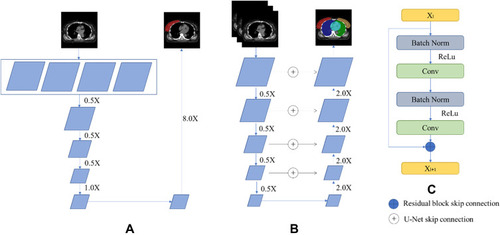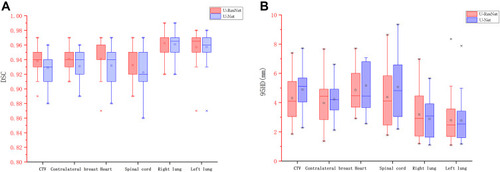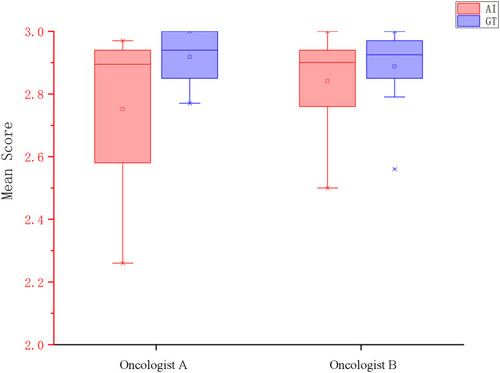Figures & data
Table 1 The Standard Delineation of CTV After BCS
Figure 1 Architecture of (A) deep dilated convolutional neural network (DDCNN), (B) our proposed network, and (C) the residual block used in decoder part of our network.

Table 2 DSC and 95HD for CTV and All OARs
Figure 2 Boxplots obtained for DSC and 95HD analyses of U-ResNet and U-Net. (A) DSC analyses, (B) 95HD analyses.

Figure 3 CTV and OAR contours generated by (A) GT, (B) U-ResNet, and (C) U-Net after breast conservative surgery.

Table 3 Evaluation for CTV and OARs by Oncologist A
Table 4 Evaluation for CTV and OARs by Oncologist B
Table 5 The Consistency Test Between Two Oncologists

